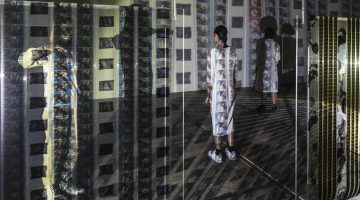A very reliable rumor has it that the San Francisco Art Institute will be hosting the 27th iteration of its summer Art Criticism Conference starting August 13 and running through August 15. This is the annual event that brings together all of the smart kids who live in town, so all of us at SFAQ want you to drop whatever plans that you may have made and get in on the brainiac fun. This year’s conference will be organized and directed by SFAI faculty member Mark Van Proyen, and will include a series of seminars for enrolled students given by himself, freelance writer Alexander Bigman, curator and art historian Natasha Boas, San Francisco Chronicle Art Critic Kenneth Baker, independent art historian John Held Jr. and writer-editor (and SFAI faculty member) Meredith Tromble.
It will also feature two evening events that will be free and open to the public. These are not to be missed.
The first of these will be a staged reading of Oscar Wilde’s 1890 play titled The Critic as Artist, performed by Clayton Hodges and Nick Childress. The play is both philosophical dialog and comic masterpiece, and it brilliantly addresses the enduring questions about the role of criticism in relation to artistic creation. The Critic as Artist will take place in the lecture hall at 800 Chestnut Street, on August 13th and will begin at 7:30 PM.
The second public event will be the keynote lecture titled Against the Body by Julia Bryan-Wilson, taking place at 7:30 PM on Thursday evening August 15. Again, we strongly encourage all interested parties to contact SFAI for reservations at www.sfai.edu. The topic of Professor Bryan Wilson’s lecture will be the work of Ana Mendieta, focusing on some of the unsettled issues of its ongoing critical and art historical reception. In 2009, the University of California Press published Professor Bryan-Wilson’s book titled Art Workers: Radical Practice in the Vietnam War Era, which told the story of the Art Worker’s Coalition and the New York Art Strike of 1970. In 2009, Artforum signaled out Artworkers as one of the best books of that year.
Key organizing figures of the Art Strike were Carl Andre, Hans Haacke, Robert Morris and Lucy Lippard, all of whom collaborated to direct their collective misgivings at War, Racism and Repression in response to the then-new cloud of conservatism and military adventurism ushered in during the first two years of Richard Nixon’s first term in office. It was a time of war and economic stagflation, and it was also a time of intellectual disappointment in the failure of the Democratic Party to lead the country in the direction of sanity. In other words, it was a time very much like our own, which is one reason why Bryan-Wilson’s book such a compelling read. As is still the case, the question of how artistic labor registers or fails to register within the wider field of the production of meaning is a vexed one, and her analysis of that topic is among the most searching and sophisticated of any that have ever been published.
Since the time of the book’s publication, Professor Bryan-Wilson has joined the Art History faculty of the University of California at Berkeley. She has recently contributed critical and theoretical writings to many publications, including Artforum and the CAA Art Journal, where her 2012 essay titled Invisible Products won the 2013 CAA annual award for best article brought out in that publication.
For more information visit here.



